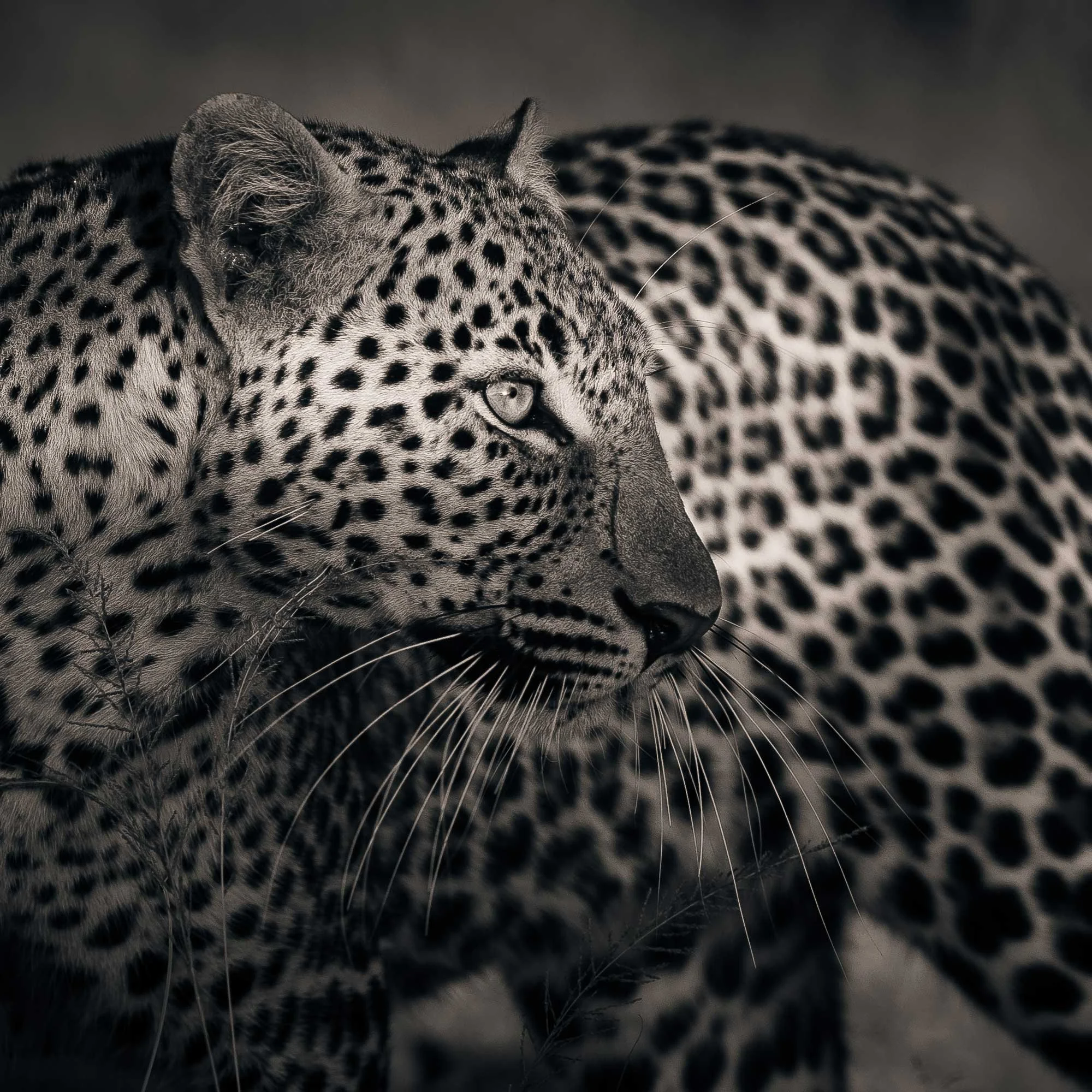 Image 1 of 3
Image 1 of 3

 Image 2 of 3
Image 2 of 3

 Image 3 of 3
Image 3 of 3




First Light
Maasai Mara Kenya 2011
An edition of 25 in all sizes
Nyakoni is a son of a Maasai Mara icon named Olive, a popular leopard and one of the stars of television's Big Cat Diary. There was a canopy above and the dappled light leaks danced all around he moved underneath. At the time of capture I had not noticed the leak of light across his eyes.
First Light started out in colour until a desire to render a leopard picture successfully in black and white. Those who have seen these big cats in real life would probably acknowledge that leopards in black and white would unlikely succeed given their coat of colour, and I was one of them. Bob Carlos-Clarke was a photographer active in the 1980s and renowned for his darkroom technique of toning prints with selenium on fibre based paper (something I also experimented with at the time). Those plum tones he achieved in the darkroom was the inspiration for the final treatment of this picture.
This frame is the most aesthetically pleasing of a sequence of three, it's not cropped or edited except for a little dodge and burn and the black and white treatment. So it remains true to life just as the camera saw it, save for the Carlos-Clarke inspiration.
Maasai Mara Kenya 2011
An edition of 25 in all sizes
Nyakoni is a son of a Maasai Mara icon named Olive, a popular leopard and one of the stars of television's Big Cat Diary. There was a canopy above and the dappled light leaks danced all around he moved underneath. At the time of capture I had not noticed the leak of light across his eyes.
First Light started out in colour until a desire to render a leopard picture successfully in black and white. Those who have seen these big cats in real life would probably acknowledge that leopards in black and white would unlikely succeed given their coat of colour, and I was one of them. Bob Carlos-Clarke was a photographer active in the 1980s and renowned for his darkroom technique of toning prints with selenium on fibre based paper (something I also experimented with at the time). Those plum tones he achieved in the darkroom was the inspiration for the final treatment of this picture.
This frame is the most aesthetically pleasing of a sequence of three, it's not cropped or edited except for a little dodge and burn and the black and white treatment. So it remains true to life just as the camera saw it, save for the Carlos-Clarke inspiration.
Maasai Mara Kenya 2011
An edition of 25 in all sizes
Nyakoni is a son of a Maasai Mara icon named Olive, a popular leopard and one of the stars of television's Big Cat Diary. There was a canopy above and the dappled light leaks danced all around he moved underneath. At the time of capture I had not noticed the leak of light across his eyes.
First Light started out in colour until a desire to render a leopard picture successfully in black and white. Those who have seen these big cats in real life would probably acknowledge that leopards in black and white would unlikely succeed given their coat of colour, and I was one of them. Bob Carlos-Clarke was a photographer active in the 1980s and renowned for his darkroom technique of toning prints with selenium on fibre based paper (something I also experimented with at the time). Those plum tones he achieved in the darkroom was the inspiration for the final treatment of this picture.
This frame is the most aesthetically pleasing of a sequence of three, it's not cropped or edited except for a little dodge and burn and the black and white treatment. So it remains true to life just as the camera saw it, save for the Carlos-Clarke inspiration.